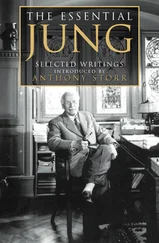III BHAGWAN SHREE RAJNEESH
RAJNEESH IS BEST KNOWN TO the general public as the guru who owned ninety-three Rolls-Royces and who celebrated sex as a path to enlightenment. Any guru who promotes technology, capitalism, and free love is likely to win support, and Rajneesh was hugely successful in attracting followers, especially from the white middle class. Eileen Barker wrote that, in the early 1980s, there were between three and four thousand disciples in the UK alone in ‘what was possibly the most fashionable and fastest-growing alternative spiritual/religious movement in Britain.’ 1Rajneesh resembled other gurus in many particulars which we shall explore, but differed from them in being so eclectic that what was personal in his teaching is hard to determine. He was certainly influenced by the writings of Gurdjieff, to whom he frequently referred, and whom he partly resembled. Both gurus affirmed that it was their mission to rouse people from sleep, and both relied more upon personal charisma than upon any coherent body of doctrine.
Rajneesh, like Gurdjieff, was personally extremely impressive. Many of those who visited him for the first time felt that their most intimate feelings were instantly understood; that they were accepted and unequivocally welcomed rather than judged. He seemed to radiate energy and to awaken hidden possibilities in those who came into contact with him. Professor Ralph Rowbottom wrote that he found in Rajneesh ‘a teacher whose words made sense of all the basic issues of life, one whose presence touched me deeply.’ 2Hugh Milne, a Scottish osteopath who became his bodyguard, wrote of his first meeting: ‘I had the overwhelming sensation that I had come home. He was my spiritual father, a man who understood everything, someone who would be able to convey sense and meaning into my life.’ 3In her introduction to Rajneesh’s book The Supreme Understanding , Ma Yoga Anurag wrote: ‘Only a Master to whom you can entrust your very being – physical, mental and spiritual – is capable of taking you on such a journey. Listening to Bhagwan, I gradually came to realize that he knows, he has the power, that if I can only say, “Yes, I leave everything to you,” everything will be taken care of.’ 4The psychiatrist James S. Gordon, who has written the best book on Rajneesh, said that the phrase which his disciples repeatedly used of him was ‘This man knew.’ 5
Yet Rajneesh, like so many other gurus, became corrupted by wealth and power and deteriorated both physically and mentally. He was finally imprisoned in, and then expelled from, the United States. After being refused entry by various countries, he eventually returned to India. He died in 1990. It is a sad story; for it appears from his discourses that, at the beginning of his career, he had much to offer.
Rajneesh was born on December 11, 1931 in the small town of Kuchwada in the state of Madhya Pradesh at the house of his maternal grandparents with whom he spent much of his childhood. They seem to have adored him, and it is alleged that he was so graceful and beautiful a child that his grandfather believed that he must have been a king in some previous existence. This is why he was called ‘Raja’ which later became ‘Rajneesh’. When he was five years old, a younger sister died. He was distressed by her death, but by far the most traumatic event of his early childhood was the death of his grandfather in 1938, when he was seven. The grandfather’s terminal illness, which followed a stroke, was prolonged and painful; and Rajneesh claimed that it had the effect of persuading him never to form any more close attachments for fear that a similar tragedy would follow. It is reported that after watching his grandfather die, Rajneesh refused to eat or leave his bed for three days. After this bereavement, he moved back to live with his parents in Gadarwara and went to school there.
As a boy, Rajneesh was isolated, self-absorbed, and obviously clever. It is typical of gurus to attract followers rather than make friends; and this characteristic manifested itself very early. He led other children into mischief and constantly challenged authority. He was also a sickly child who suffered from asthma and who came close to death on several occasions. He played with death, taking risks in order to come to terms with his fear of it. For example, he would dive into whirlpools in the river Shakkar and let himself be sucked down until, at the bottom of the whirl, he was thrown free. Like other intelligent isolates with poor health, he read enormously widely and continued to do so for many years. He became familiar with both the sacred scriptures of the East and with the major philosophers of the West. But his search for religious truth always ended in rebellion and mockery. He was as incapable of accepting any ideology as he was of obeying authority. He was turbulent, aggressive, and arrogant. A contemporary described him as being very bright, but also as being an habitual liar. There were also early doubts about his financial honesty. He toyed with socialism and atheism, and joined the youth branch of the Indian National Army. In 1951 he graduated from high school and went to Hitkarini College in Jabalpur. He was so argumentative and difficult that he was asked to leave. He was admitted to another college, but preferred to stay at home rather than attend classes.
He then appears to have experienced an extended period of mental illness in which he suffered from disabling headaches, anorexia, depersonalisation, and severe loss of confidence. On one occasion he felt as if the connection between his body and his spiritual being had disintegrated. He ran up to sixteen miles a day in order to try and feel himself again, and started to meditate. His parents, believing that he was mentally ill, took him to see a number of different doctors; but an Ayurvedic physician, in R. D. Laingian fashion, reassured them that he was passing through an important personal crisis from which he would emerge.
On March 21, 1953, when he was twenty-one years old, Rajneesh’s illness terminated with what he called ‘enlightenment’. This was the end-point of seven days during which he ceased to strive, seek, or struggle, but passively let go and waited. He entered an ecstatic state in which ‘everything became luminous, alive and beautiful,’ and he himself felt ‘mad with blissfulness’. He sat under a Maulshree tree, as the Buddha, reputedly, had sat under the bodhi tree; but the ecstatic enlightenment which he experienced seems very different from the calm, composed, dispassionate state of mind in which the Buddha came to his conclusions about the human condition.
This series of events sounds like a psychotic episode. It appears probable that Rajneesh suffered from a fairly severe depressive illness between the ages of nineteen and twenty-one which came to an end with a hypomanic state in the form of an ecstatic experience. Although this period of mental distress followed by revelatory recovery took place rather earlier in Rajneesh’s life than it did with other gurus, it still conforms to the characteristic pattern. There are strong hints that he suffered from further periods of depression after he had become established as a guru. Twenty-one years later, in March 1974, he withdrew from all activities and went into complete silence for the next few weeks. In 1981, he also went through a period of some months in which he failed to respond to those caring for him, and apparently did not even read. Rumour also suggested that from time to time he drank heavily, and took valium, hashish, and other drugs including nitrous oxide. These could have been used to alleviate or ward off periods of depression which, naturally enough, would have been concealed by those close to him. I think it reasonable to conclude that, as in the cases of many other leaders, his personality was both narcissistic and manic-depressive, manifesting itself in actual illness from time to time.
Читать дальше











